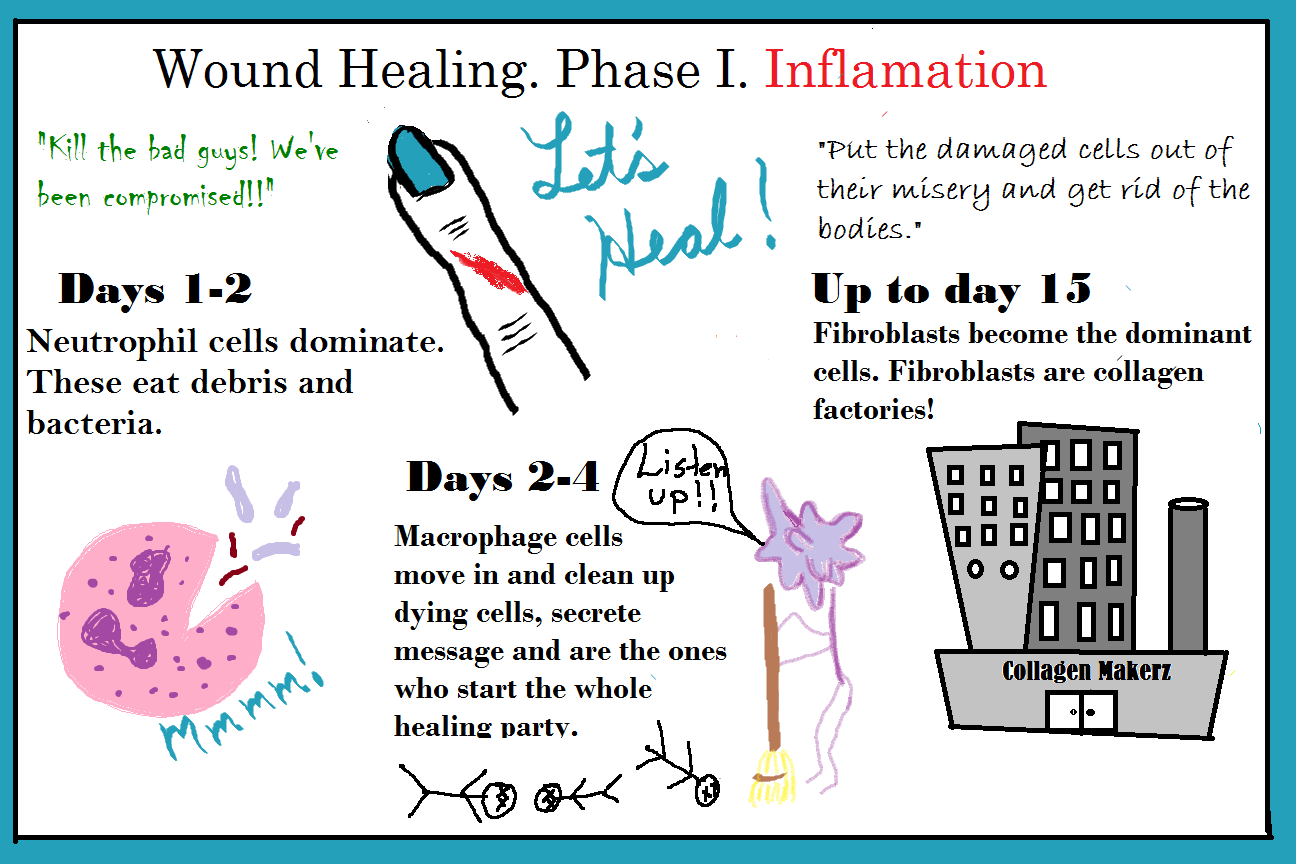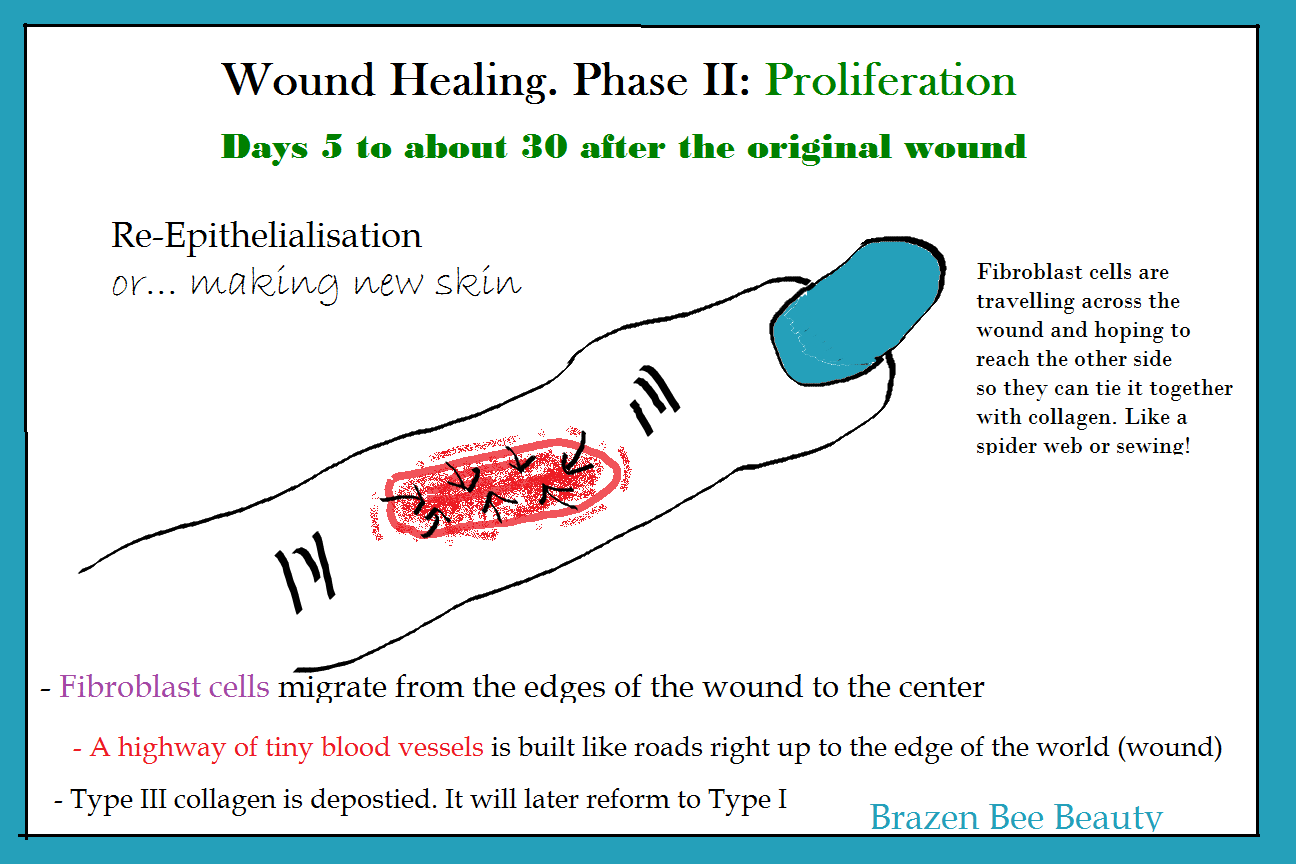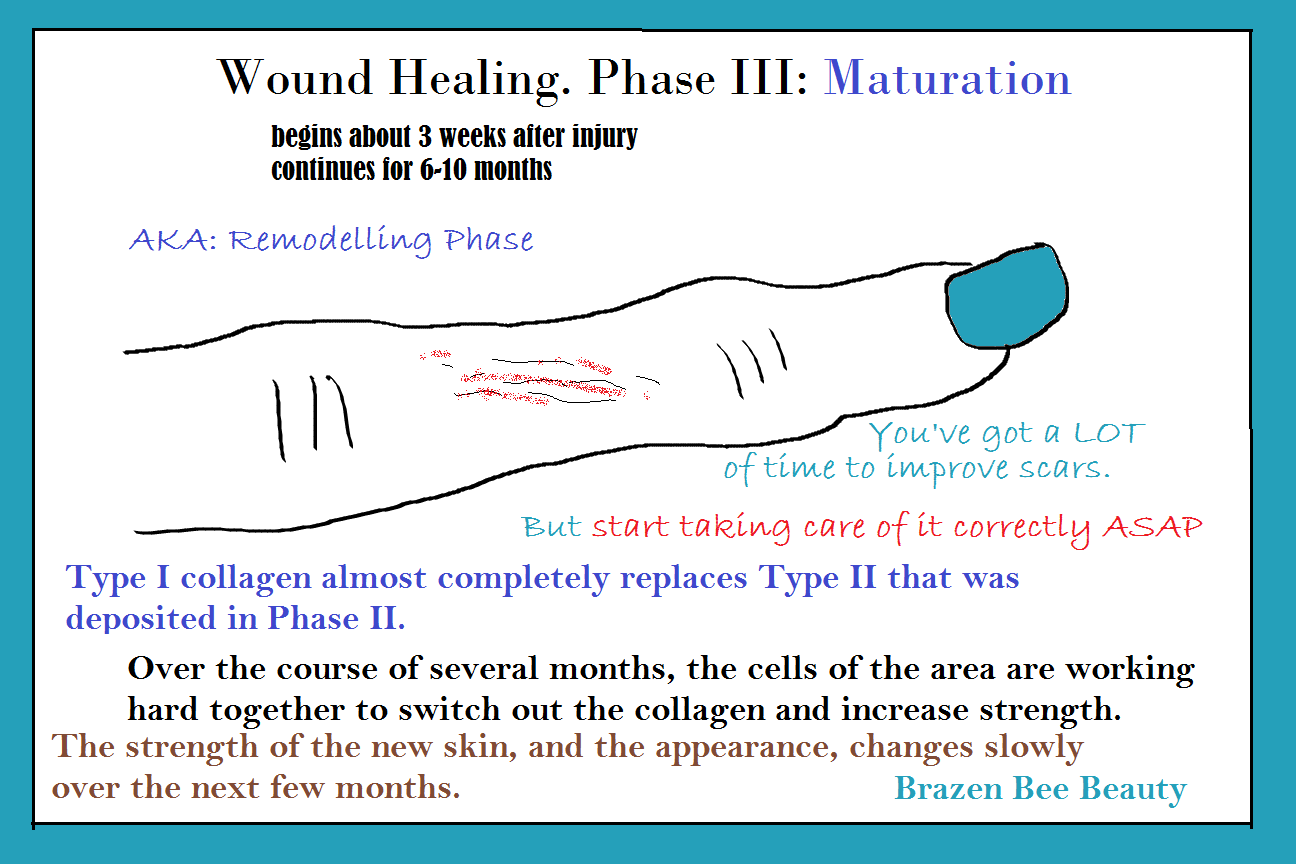Healing Scars
Posted by Courtney Henslee on Dec 26th 2015
I believe that understanding what the skin does to heal a typical cut or wound can help us understand everything from Acne to Eczema. To get deeper into the processes that it undergoes on a cellular level helps us become closer to the intricate dance we are trying to assist in healing all issues with the skin.

Phase one of healing a wound or cut is called the Inflammation Phase. Three different things or main players take the stage in succession. Neutrophil cells come in and are the warriors. You've been breached and they are here to make sure no enemies stay behind. They kill bacteria and eat all the debris they can. Neutrophils undergo something called degranulation where they emit antimicrobial stuffs all over the place. MMMM, antibacterial cell emissions!
Next, in 2-4 days, macrophage cells come in and clean up even more. They eat up dead cells, eat up any bacteria they can, and start signaling to everyone nearby that it's really time to amp up and get to work around here.
Around day 15 fibroblast cells move into the picture and become the dominant cells. The Neutrophils and Macrophages are just about gone as their work of cleaning up everything up has been done and now it's time to get start building on this real estate. The collagen factories have arrived!

Phase II is also known as re-epithelialization and marks the advent of true magic when skin is reformed over the area. Those fibroblast cells are actually travelling across the wound or cut and hoping to hit the other side so they can pull things together with collagen. The skin is also quickly building micro-highways of new blood vessels all around the wound in order to easily move supplies (nutrients, building blocks, and messages between the cells). It's just like building a road up to a construction site, the road is just as important as the building you are about to make.
Collagen begins to be manufactured as fast as those fibroblasts can and your new skin is being made!!! WHOAH!

Phase III of what is now a scar is Maturation. We are a good 3 weeks post-injury or surgery and this is actually the longest part of healing. The skin has built a makeshift barrier to stop intruders. It did amazing things in those 3 weeks, now that it has stopping the entry of future bad guys, it is ready to shore up this wall as much as it possibly can.
Now it's time to move collagen III out and redeposit the better collagen I which will make for stronger more "normal" looking skin. Do not be discouraged if 6 months out your scar still looks like a scar. Remember that there is SO much for the skin to do to fix this and it really is magical that it can fix itself in the first place.
What can I do to help it all go smoothly??
All of the below information has been pulled from scientific studies and the most interesting one was actually from a group of at UTMB Department of Otolaryngology/Head and Neck Surgery.I was especially giddy to see that these surgeons found a marked improvement in healing with a topical herbal ointment!!!!!
Links to my sources below
Phase I
OF course, the beginning of healing is cleaning. What you need to do here is provide a huge assist to the body by applying antibacterial helpers ASAP. If there is bacteria left, you are dragging out a process that the skin only wants to spend 2 days on. Note that topicals like Neosporin (unnatural antibacterial ointments) ALSO kill healthy bacteria and cells in the area. This is why neosporin and other chemical antibacterial ointments are not recommended (by me).
These first two weeks are all about keeping it clean and keeping it protected from having to go back to getting the neutrophil and macrophages back out. Not keeping it clean means starting the play over and over and over again, and you can imagine the cells must get tired, and then we have a true scar later.
Note that for smaller cuts all of these processes will be much shorter.
Phase II
Wooohoooo! It's time to start making some SKIN!
Phase II should be supported by a moist environment, which is also why the stringent antibacterials should be used in Phase I with some seriousness. A moist environment procures a wonderful and fast healing process, but it can also help bacteria survive. It's a fine line to walk and we have to take it seriously to get the best outcome.
This is where keeping a good moist environment is crucial and providing the body with building blocks and a communication system is important.
Keeping it moist, well-oiled with beneficial healing oils (Stiletto Moisturizer and Second Skin), and using topical herbal poultices (your Melee Facewashes with Comfrey, White Willow, chia seed, barley grass, and plantain) can really change things in the long run.
This means applying your wet poultice and leaving it on as long as it will stay wet, rinse, and apply liberal amounts of oils all day to keep moisture in. Toward the middle to end of this phase, massage has also shown to be incredibly helpful. You don't want to massage aggressively before the wound is closed, but remember that blood flow is the body's best friend throughout all of this and should not be forgotten.
Phase III
Here we go!! Now, massage massage massage with all the oils you can. It also will be helpful to the transfer of collagen types to continue to wet the area as often as possible and trap some of that moisture with oils.
Here we have a true need for a supported system of transfer and building blocks. This is there the skin is doing so many unseen things that we forget how important it is.
This is often where people stop and think that a scar is done and we can't do anything else to help it. I truly believe that we can possibly come back to a scar that is considered beyond this phase and reawaken some more replacement of collagen.
Taking a collagen supplement seems to not be a bad idea, biosil is also helpful, and the herbal poultice should still be used as the components therein remain very relevant to what the cells are trying to accomplish.
Throughout all of this, I ask that you take aloe vera juice on a daily basis. Aloe vera juice has shown to be EQUALLY AS EFFECTIVE on wounds when taken internally as when applies topically. Please remember this especially for eczema, acne, and all skin conditions. It is a great place to start with supplementation.
Sources:
UTMB on wound phases and what surgeons determined was effective
http://www.utmb.edu/otoref/Grnds/2014-03-28-wound-heal-McIntire/wound-heal-2014-03.pdf
Simpler Phases of Wound Healing
http://www.clinimed.co.uk/Wound-Care/Education/Wound-Essentials/Phases-of-Wound-Healing.aspx
Theory of Moist Wound Healing
http://www.clinimed.co.uk/wound-care/education/wound-essentials/theory-of-moist-wound-healing.aspx
Brazen's Page on Wound Healing Products
